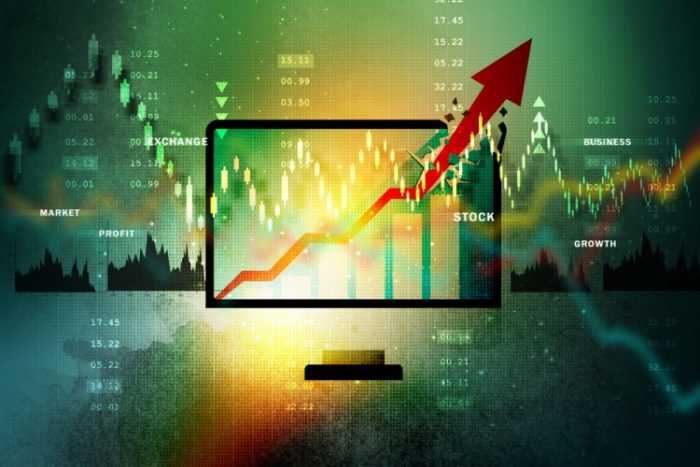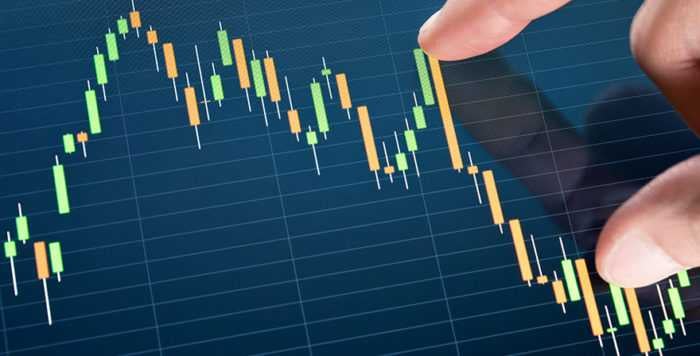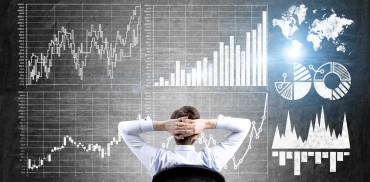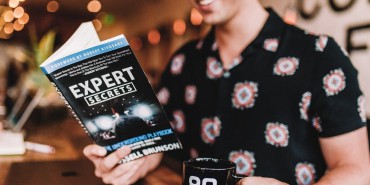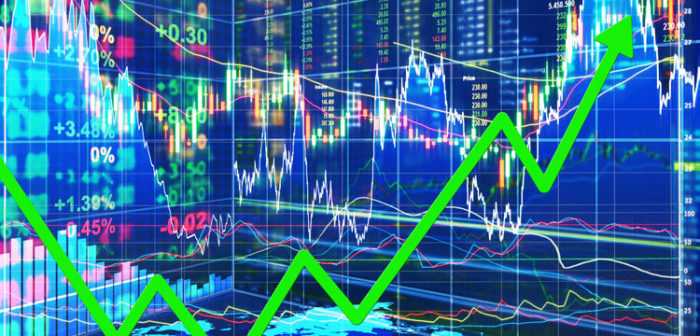
To trade in India, you must have an exit strategy. And hesitancy isn’t helpful.
To start trade in Indian stock market, you’ll need :
1. trading account
2. demat account
3. savings account
Trading and demat accounts are combinedly created which are then linked to your savings account.
A trading account is used to buy or sell the shares while a demat account is used to store the shares.
A great help when creating these accounts may come from the broker for a minimum charge. We would suggest you find a flat broker as the brokerage is less.
In India, the broker must be SEBI certified.
The markets are a mind game and to win this game, you will need a good plan and education.
You have to think before you do anything. It is necessary to measure every move because it will have an influence on your next moves. You must have a strategy in mind to modify in case things do n’t correspond with your plan.
The most important thing will be to follow the plan consistently. Actually, there is no sure-shot formula for success in the stock market. Just like any other skills, a new investor can learn stock with trial and error coupled with patience, discipline, research, and a sound understanding of the market.
What should your plan have?
How to trade in the Indian stock market?
You have to define a logical expectation of return from your capital. How much capital to be put? There are some examples.
Rs 25000/- is just a suggestive minimum, but depending on your strategy you have to find what is convenient capital requirement build on your style of investing or trading. To win this game, you have to decide the right mix of players which means, you have to work out a list of stocks, indices, options, that work for you in order to score your return objectives.
So, the most important is to design a strategy to pick stocks/contracts to trade/invest in. You have to define a clear risk management strategy. If some stock is having a bad day on the market, you have to formulate a strategy, how much diversified the portfolio should be in order to cut losers and hold on to winners. This means a clear well-defined risk management strategy.
You have to have well-defined rules when entering the basic factors. For example, results, sales growth, or technical factors like breakout along with a clear exit strategy. This means you have to have some entry and exit strategy.
HOW TO MAKE YOUR RISK MANAGEMENT
Risk Rules: The first step is to define how much to risk or how much to lose on one single trade.
Just on the available trading or investing capital, you should decide reasonable limits you are comfortable losing. This is important because if you know the loss taking capacity, then trades will be done without fear of losing. And when fear is not disturbing, you can make a decision without any emotions in your mind. Fear of loss is the biggest barrier in trading and investing and the only way to overcome is pre-defining the risk rules in the form of loss-limits.
Size of the trade: Don’t bet everything on one trade and go broke. Or bet too little and disable full profits to stay in the business.
Both of these will drive you off the markets. In the first case, there is too many emotions or greed. When the trade goes against, it will be hard to press the exit button and you go broke because the position was large. The right side of the trade is such that which limits the losses to 1% or max 2% of the trading capital.
Why trade in the Indian stock market
There are some examples, for the people in India especially. On a trading capital e.g. Rs 2 lac, you can afford to lose max Rs 4000. Therefore actually trading is at 3000. And stop-loss is put in 2800, hence maximum loss per share would be 200.
But 4000 is the maximum loss defined, as per strategy, therefore 4000/200 = 20 share can be bought at 3000 entailing a total investment of Rs. 60,000 (3000*20). With max risk at Rs. 4000 on this trade. Similarly, for investments, you should not invest more than 10% of the capital in any single stock. For the capital of Rs.2 lac, max Rs. 20,000 can be invested in a single stock, thereby creating a portfolio of 20 stocks.
These rules are not mathematical rules of exactness, they are suggestive and followed hence as best practices.
Exit strategy: In trading, you must have an exit strategy. It is important to know when to get out and mark profits or losses.
What can help you to trade in the Indian market?
Hesitance isn’t helpful when trade in the Indian stock market.
Some traders in India have a pre-defined profit target of three times risk. If risk per trade is estimated at Rs. 4000 then the profit will be registered when Rs.12000 profits are achieved.
The other exit strategy is when prices fall 10% from the top value. In that case and only then, the trader will square a long position. There are different ways of exiting the trade, it is crucial to have the exit strategy in place before entering the combat zone called the stock market.
Stop-loss strategy: No matter what strategy you adopt, 90% of trades is how to control the losses. Portfolio returns often look bad because of a few trades went wrong where the exit stop loss wasn’t defined or activate.
Because leverage is used this is more important in trading.
You generally keep a stop exit when price adversely moves beyond, say 2 times average true range (ATR) or crosses key support or resistance field.
Some prefer to keep the stop at 8% of the purchase price when we are speaking about investing. Whatever your strategies are, it is a must to exit a losing trade.
Trading vs Investing
Both require a different set of skills, mental attitudes, and different rules.
The important decision-making points wherein strategy differs are Stop Loss or Hold On, long term or short term, analyzing price or analyzing the value, to follow the market or to predict are some of the contrasting and opposite action points which need to be applied to either investing or trading to the exclusion of each other. Doesn’t matter whether you are a trader or investor.
Markets swing both ways, the bear market is going to follow the bull market.
That means you should not have a prejudice towards long trades, selling short should also be done with the same comfort.
By refusing to sell short you forgo huge opportunity to make money when the markets are in bear zone.
Keep in mind, money can be made in 2 ways when trading:
- Buying Low and Selling High!
- Selling High and Buying Low!
The hardest thing in the financial markets is the ability to consistently execute the plan with strong discipline.
This rarely happens and that is why the results are so poor. The majority of the traders do not make money, because they lack discipline. To control over self all the time is really hard, but stay disciplined all the time is the most important ingredient for success.
Whoever does it has wealth.
Trading and Investing are essentially connected with human emotions.
Basically, the human being makes the decision but the emotions act as barriers that impede good decisions. Sometimes the biggest battle is inside your own mind. To be a successful trader or investor you need to understand your own temperament. Whether you are patient or impatient, fearful, or fearless. A slow decision-maker or fast decision-maker, emotional or unemotional.
Identify your psychological outlook and select the style which suits you the best, and you can have sustained success in trading and investing. Any money-making skills have to be self-acquired. You can’t postpone efforts to self-learn the art of making money through hard work and education. There is nothing that can substitute self-acquired knowledge and experience. You will have to write your own test in the markets.
No copying or cheating will help you to pass the test! So, don’t listen to too many forecasters or advisers!
What is the math of profit
It is very easy when trade in the Indian stock market.
Reduce costs, profits will automatically increase.
Businesses are becoming digital driving down their cost of operations dramatically.
Every trader and investor must act in order to reduce costs and increase profits dramatically.
And you have to go with the trend.
Once the phase of the market is identified as a bull or bear, then one should trade or invest in that direction.
Also, it is not necessary to trade obsessively. Unfortunately, more tradings don’t mean more returns. Contrary, as investors’ motion increases, return decreases. Sometimes if there is no clear trend in the markets, it might be better to be an observer than be a compulsory participant. Both, in life simple things are more effective and in trading or investing. The strategy should be simple and easily understood too.
The key to success is to stick to your rules of entry/exit points, to have solid risk management, self-control to stick to the plan. Also, the ability to control your emotions is the key to success. There is no other mystery to success in the markets.
And read about the best Indian investors.

 Start with this number. Do you know what your life costs right now? Do you have a mortgage or you pay rent? How much do you spend on essentials, from food to clothes to insurance to annual fees, every month? And don’t forget to account for inflation over the long term.
Start with this number. Do you know what your life costs right now? Do you have a mortgage or you pay rent? How much do you spend on essentials, from food to clothes to insurance to annual fees, every month? And don’t forget to account for inflation over the long term.  Let’s say you don’t want a risky investment, so you rather stay away from stocks. If you put your money in bonds, you might get a more stable return. If you looked for municipal bonds, you probably wouldn’t have to pay federal or state taxes. Suppose you can find a good portfolio of municipal bonds paying a 4% annual return. That’s an acceptable rate and a safe investment and probably even avoids taxes. For that $50,000 you need a principal amount of $1.25 million dollars.
Let’s say you don’t want a risky investment, so you rather stay away from stocks. If you put your money in bonds, you might get a more stable return. If you looked for municipal bonds, you probably wouldn’t have to pay federal or state taxes. Suppose you can find a good portfolio of municipal bonds paying a 4% annual return. That’s an acceptable rate and a safe investment and probably even avoids taxes. For that $50,000 you need a principal amount of $1.25 million dollars. 


